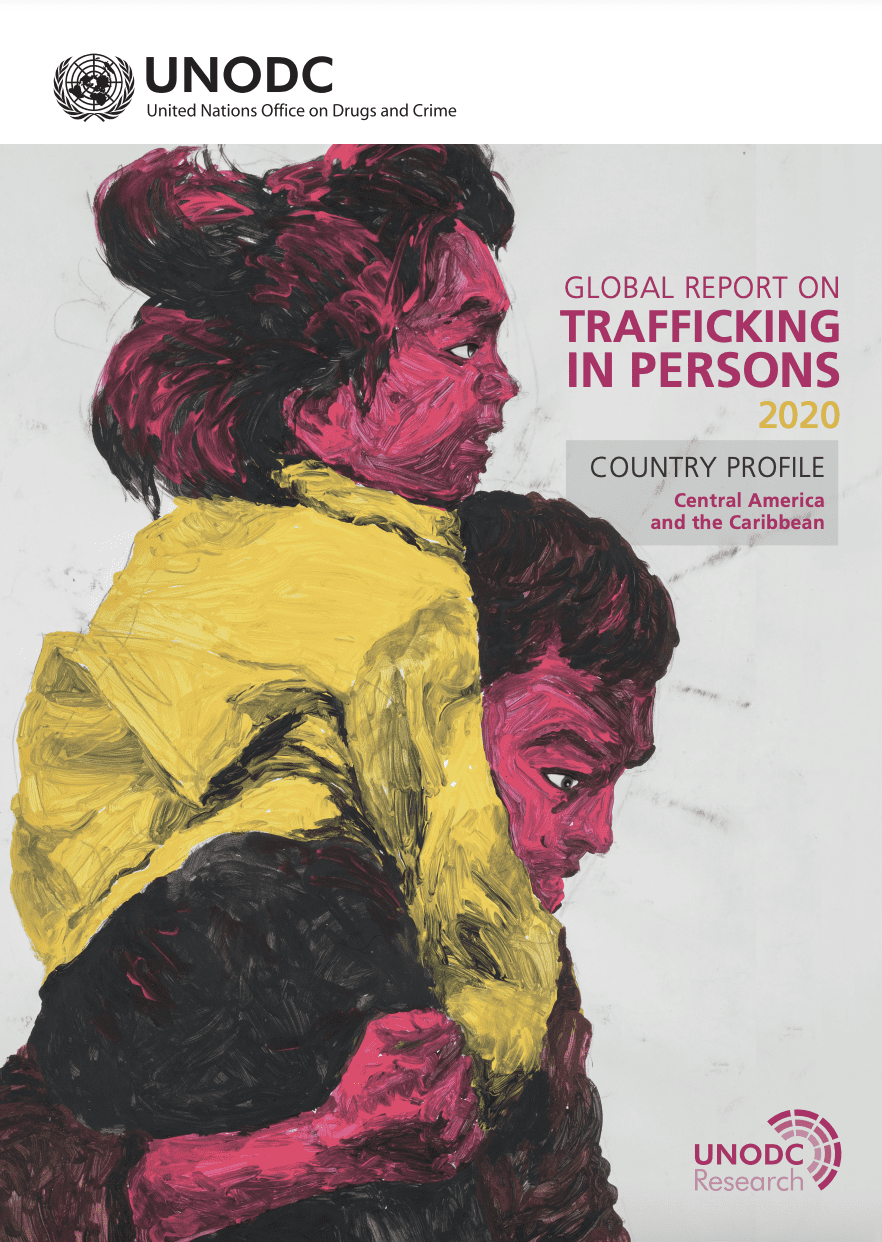
Global Report on Trafficking in Persons, Country Profile: Central America and the Caribbean
− Bahamas −
The current legislation on trafficking in persons in Bahamas, the Trafficking in persons (Prevention and Suppression) Chapter 106, covers all forms of trafficking indicated in the UN Trafficking in Persons Protocol.
Investigations and suspects
Between 2017 and 2018, one case of trafficking in persons was recorded in Bahamas. In 2017, four persons (three men and one woman) were brought into formal contact with the police and/or the criminal justice system because they were suspected of, arrested or cautioned for trafficking in persons. In the same year, one woman was prosecuted and one man, a citizen of Bahamas, was convicted of trafficking in persons for the purpose of sexual exploitation. In 2018, one woman originating from Jamaica was also convicted of trafficking in persons for the purpose of sexual exploitation.
Source: Royal Bahamas Police Force.
Victims
In 2017, one woman was identified as victim of trafficking for the purpose of sexual exploitation. The victim was a citizen of Jamaica.
Source: Royal Bahamas Police Force.
− Costa Rica −
The current legislation on trafficking in persons in Costa Rica covers all forms of trafficking indicated in the UN Trafficking in Persons Protocol.
Investigations and suspects

In 2016, five persons were prosecuted for trafficking, nearly equally males and females, with one male being convicted. The next year, 24 persons were prosecuted, of these 16 were males, with 10 total convicted. In 2018, 60 persons were prosecuted and nine convicted. Of these, six were females. In 2017 and 2018, all persons convicted were either nationals of Costa Rica or citizens of other Central American countries.
Source: Deputy Prosecutor’s Office against Trafficking in Persons.
Victims
In 2016, five adult female victims of trafficking in persons for sexual exploitation were detected. In 2017, a total of 60 victims were identified – 23 girls, 30 women, and seven men. Of those victims detected in 2017, 53 were trafficked for sexual exploitation, 14 for organ removal, seven for a mix of forced labour and sexual exploitation, and two for illegal adoption.
In 2018, 21 victims were identified – 13 children, including 11 girls, and eight adults, equally split between men and women. Of these, the majority were trafficked for the purpose of sexual exploitation with one victim trafficked for organ removal and five for a mix of forced labour and sexual exploitation. Most victims were nationals of Costa Rica or other Central or South American countries with one victim originating from East Asia. In 2018, ten nationals of Costa Rica were trafficked domestically.
Source: Deputy Prosecutor’s Office against Trafficking in Persons.
− Dominican Republic −
The current legislation on trafficking in persons in the Dominican Republic covers all forms of trafficking indicated in the UN Trafficking in Persons Protocol.
Investigations and suspects
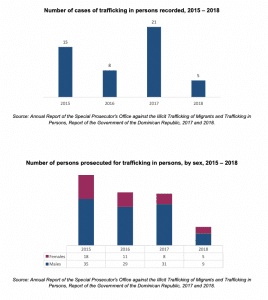
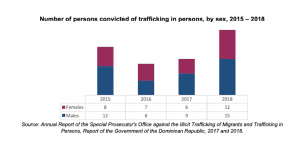
In 2017 and 2018, the majority of persons convicted of trafficking in persons were nationals of the Dominican Republic. In the same period, five were from North America and three were from Western Europe. The charge of child pornography was also sought or secured in conjunction with the crime of trafficking in persons.
Source: Report of the Government of the Dominican Republic, 2017 and 2018.
Victims
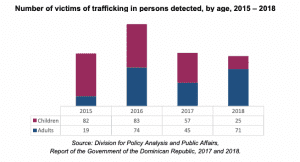
The majority of victims detected by national authorities in the indicated period were females, both women and girls. More girls than women were identified in 2017 and in 2018, more women were identified. In 2017, 13 boys were identified as victims of trafficking in persons, though no man was identified in the period considered. In 2017 and 2018, the majority of victims were nationals of the Dominican Republic with a smaller number originating from South America and other unknown countries.
Source: Division for Policy Analysis and Public Affairs, Report of the Government of the Dominican Republic, 2017 and 2018.
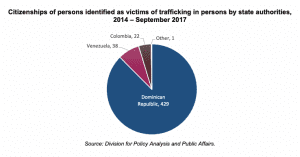
The majority of citizens of the Dominican Republic who were identified as victims of trafficking in persons in 2017 and 2018 were trafficked domestically, with a small number of persons reported as repatriated from countries in the Caribbean, Central America, West Africa, and the Middle East.
Source: Report of the Government of the Dominican Republic, 2017 and 2018.
Read more here.
